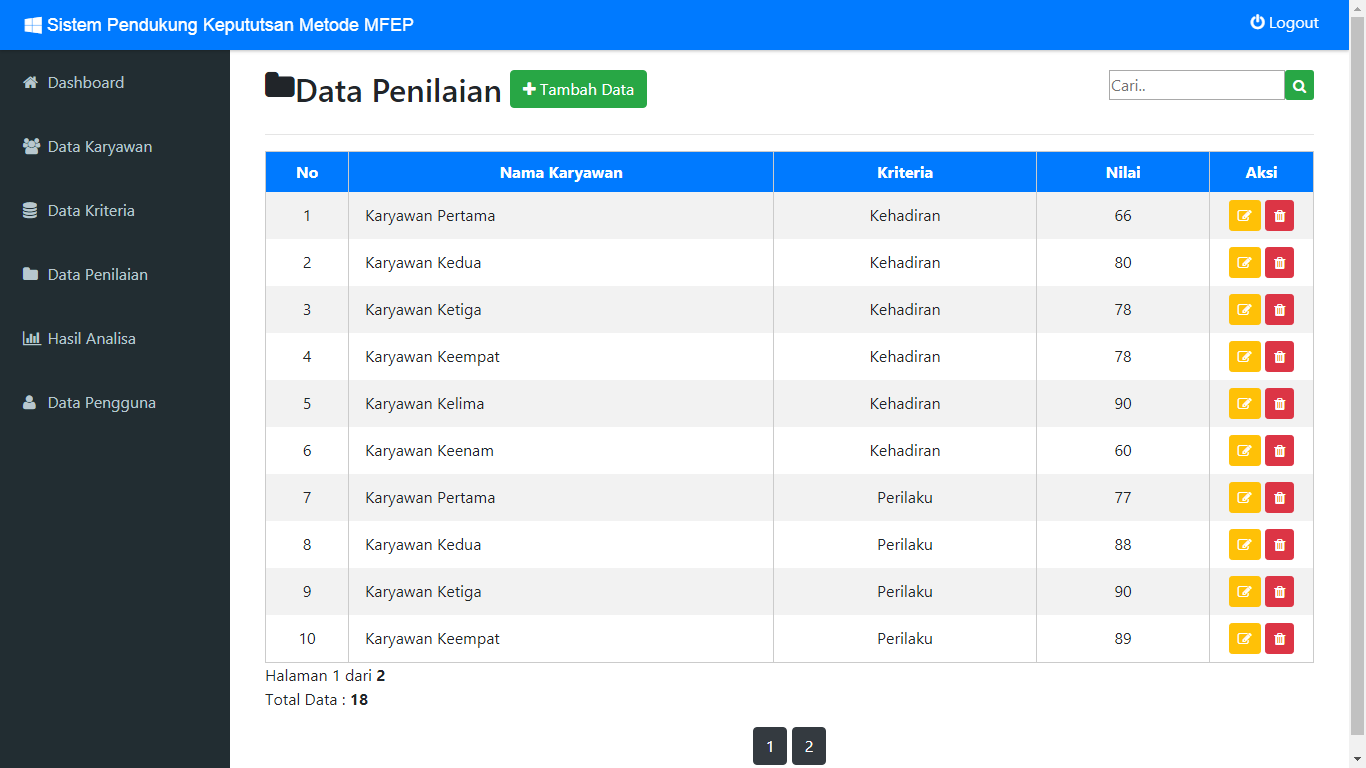

Because mentioned features of AHP method, it could be used in rural development works. At the same time, it permits utilization of ideas of many experts and use them in decision process.

It allows evaluation of quality and quantity factors.

After degrading a problem in smaller pieces, relative importance and level of importance of two compared elements are determined. AHP methods is one of multi-criteria decision method. Analytic Hierarchy Process ( AHP method can be utilized at there stages of development efforts. Therefore, in development efforts problem should be stated clearly, analyzed and many criterias should be evaluated by experts. As it is understood from this description, rural development is a very broad concept. The result of modeling is K-Means clustering algorithm application program can be used if UIN Syarif Hidayatullah Jakarta want to develop LAZ (Amil Zakat Agency) too.USING ANALYTIC HIERARCHY PROCESS ( AHP METHOD IN RURAL DEVELOPMENTĭirectory of Open Access Journals (Sweden)įull Text Available Rural development is a body of economical and social policies towards improving living conditions in rural areas through enabling rural population to utilize economical, social, cultural and technological blessing of city life in place, without migrating. The advantaged of research expected to be able to determine quickly whether the person meets the criteria as a mustahik or Muzaki for LAZ (Amil Zakat Agency). Result filtering based on Gender is "Male" accuracy 83.93%, based on Age is "30-39" accuracy 71,03%, based on Job is "PNS" accuracy 83.39%, based on Education is "S1" accuracy 83.79%. That means accuracy of the system modeling able to determine data Mustahiq. The simulation result from a total of 1109 correspondents, 300 correspondents are included in the Mustahiq cluster and 809 correspondents are included in the Non-Mustahiq cluster and have an accuracy rate of 83.40%. The results of this study are displayed in tabular and graphical form, namely the proposed Mustahiq data processing model at Zakat Agency (LAZ). We do several experimental and simulation scenarios to find a model in mapping Mustahiq data to developed best model for processing the data. The first we made tools for grouping simulation test data. This research focuses on modeling that applies K-Means Algorithms and Big Data Analysis. K-Means algorithm is an algorithm for cluster n objects based on attributes into k partitions according to criteria that will be determined from large and diverse Mustahiq data. We conducted by combining data to analyzed using Big Data and K-Means Algorithm.
#SOURCE CODE SISTEM PENDUKUNG KEPUTUSAN METODE SMART OFFLINE#
Online data survey with Google form and Offline Data survey we got from BAZNAS (National Amil Zakat Agency) in Indonesia and another zakat agency (LAZ) in Jakarta. We got data Mustahiq with random sample from online and offline survey. The research is "Modeling using K-Means Algorithm and Big Data analysis in determine Mustahiq data ".

This can also be a reference for determining the zakat recipient cluster to those who are entitled later. Furthermore, the data already in the cluster can be used by LAZ managers to develop the organization. This is the reason for the researcher to take this theme in order to help the existing LAZ to make it easier to cluster Mustahiq data. It is possible that a Mustahiq will change his condition to become a Muzaki. So, in giving zakat to Mustahiq, LAZ will find it difficult to monitor the progress of the Mustahiq. To give zakat to Mustahiq certainly requires speed of information. And to find out whether the Mustahiq data is still up to date (renewable), of course it will be very difficult due to the types of data types that are not uniform or different, long time span, and the large amount of data. There are differences in Mustahiq data types so that data that is so large cannot be used together even though the purpose of the data is the same to determine Mustahiq data. Each LAZ has Mustahiq data that is different in type from other LAZ. There are a lot of Mustahiq data in LAZ (Lembaga Amil Zakat) which is spread in many locations today.


 0 kommentar(er)
0 kommentar(er)
